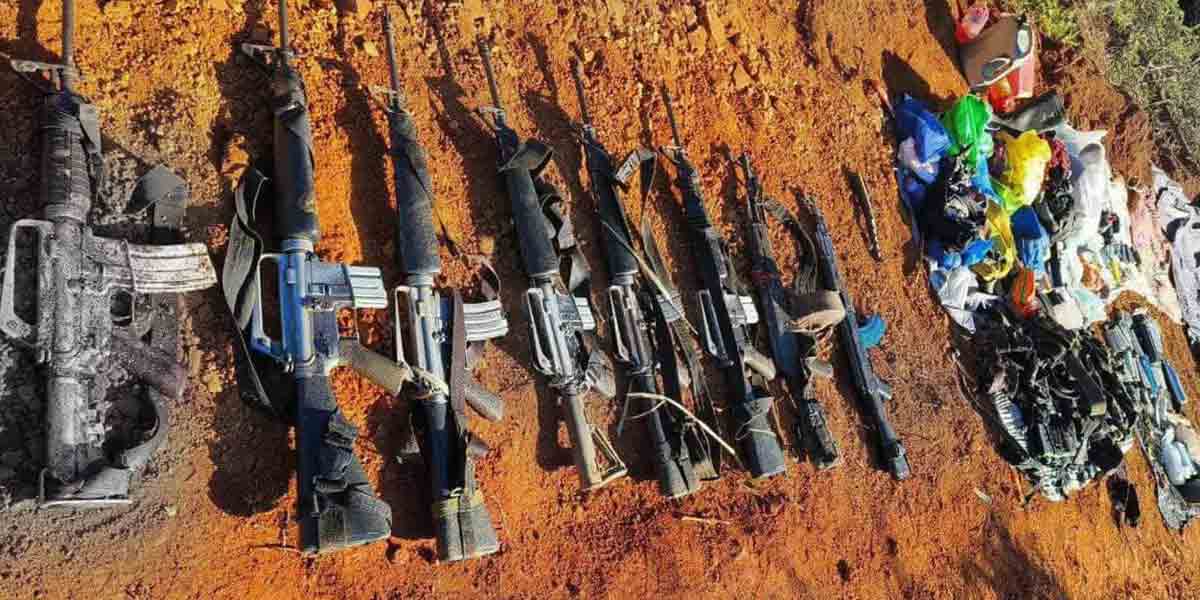By Mark Valencia
Concerned by the Biden administration’s continuation of former US president Donald Trump’s military-first approach to its South China Sea issues with China, I have sketched out a scenario in which the two are dragged into a kinetic conflict via the 1951 US-Philippine Mutual Defense Treaty (MDT).
The scenario is that an element of the Philippines military – possibly rogue – provokes a clash with China’s military. The Philippines demands that the US honor its commitment to come to its defense. The US then has to choose between conflict with China or losing its credibility in the region.
This hasn’t happened yet. But it darn near just did – and may yet become reality.
On November 16, the China Coast Guard used water cannons to “persuade” Philippine civilian vessels to turn back from their mission of resupplying the Philippine military garrison on a grounded but still “in service” Philippine Navy vessel on Second Thomas Shoal in the Spratly Islands. The Philippines claimed that the vessels chartered by the navy were “public vessels” covered by the MDT.
The US State Department tried to finesse the situation by deterring China from further escalation while not making a commitment to the Philippines to send the US military. But its diplomatic tightrope walk only created more uncertainty.
It stated, “The United States stands with our Philippine allies in upholding the rules-based international maritime order and reaffirms that an armed attack on Philippine public vessels in the South China Sea would invoke US mutual defense commitments.”
While sounding like a prelude to conflict, it actually was a typical State Department splitting of hairs. The key qualifiers in the statement are “armed attack,” “public vessel” and “mutual defense commitment.”
Obviously the US did not consider the use of water cannons by the China Coast Guard on the chartered civilian supply vessels an “armed attack on Philippine public vessels.” Otherwise it would have implemented the MDT Article IV clause as a response.
It may have considered that water cannons are not arms. “Armed” means use of weapons, and “weapons” usually means something used to injure, defeat or destroy. Although no one was injured, one of the supply boats was damaged.
It may also have argued that chartered civilian vessels are not public vessels. “Public vessel” means “a vessel owned or bareboat chartered and operated” by a government. A bareboat charter is a boat chartered without its crew. It is not clear if the crew consisted of Filipino military personnel.
Moreover, the initial reports were confused. Philippine National Security Adviser Hermogenes Esperon said two China Coast Guard ships blocked the two Philippine supply boats while a third China Coast Guard ship water-cannoned them. But a military official said two Chinese boats “attacked” the supply boats while a third served as a guard.
Strangely, the Philippine military leadership remained silent on the incident. This indicates some confusion as to what exactly took place, and perhaps the US was buying time until the details of the incident were clear and it had fully thought through its options and their implications.
AMBIGUOUS RESPONSE
The US State Department may have been a little too clever. Whatever the reasons, by ambiguously bolstering the Philippines and threatening China, the US may have dug itself deeper into a self-made dilemma that will only get worse.
There is a good possibility that a more pro-American anti-China candidate will be elected president of the Philippines next year. Such a president might be willing to allow the military to provoke China into a conflict that would put the US in the position of coming to its aid militarily or losing its credibility – which is already in doubt.
However, even then, a military response would not be immediate.
MDT Article IV provides that “an attack on either party will be acted upon in accordance with their constitutional processes and that any armed attack on either party will be brought to the attention of the United Nations for immediate action. Once the United Nations has issued such orders, all hostile actions between the signatories of this treaty and opposing parties will be terminated.”
The US has now brought itself to the brink and left the next move in the hands of the Philippines or China. By being ambiguous it may have encouraged the Philippines to up the ante. It seems to be counting on the Philippines not to escalate the situation, or if it does, on China backing down because of the US threat. Either could be a dangerous miscalculation.
It is not clear that the US has thought through such scenarios, its options and their implications. What if the Philippines brings in its coast guard or navy – as meager as it is – to resupply the garrison and China tries to block these vessels with maneuvers or water cannons?
China has apparently told the Philippines that it will not interfere with future supply deliveries there. According to Philippine Defense Secretary Delfin Lorenzana, “We will see if they are true to their words, as our Navy will proceed with resupply this week.”
What is worrying is that Chinese Foreign Ministry spokesman Zhao Lijian has said that the Philippine supply boats “trespassed into [China’s] waters without China’s consent” and that the Chinese coast guard vessels had “upheld China’s territorial sovereignty and maritime order.”
Something had to give. And apparently it has. According to Lorenzana, “There will be no navy or coast guard escorts for the Philippines’ resupply boats when they sail back to Second Thomas Shoal.” But the situation is still fluid and dangerous.
Say the US does provide immediate military support, but then China ups the military ante. The Philippines might cut and run – both militarily and politically – leaving the US to clean up the military and political mess with China, probably resulting in a mutual climbdown.
In another variation of this scenario, China compromises with the Philippines, leaving the US looking like the outside aggressor.
It is not far-fetched to think the Philippines might unilaterally exacerbate the situation. In an attempt to draw world attention to the situation, in 2014, the Philippine military arranged for a dozen journalists to accompany a resupply mission to Second Thomas Shoal. Two Chinese coast guard vessels tried to block the vessels carrying the journalists, but the supply boats managed to evade them and complete the mission.
The present situation is particularly dangerous because of past incidents in which the US failed to come to the Philippines’ assistance.
In 1995 the US failed to act when China occupied another low-tide feature in the Philippines’ exclusive economic zone (EEZ), Mischief Reef. Although China controls it, the US challenges its claim to it with frequent freedom of navigation operations.
Again in 2012, the US tried to broker a stand-down between China and the Philippines over Scarborough Shoal, a disputed rock claimed by both. The Philippines did so, but China did not and it now controls the feature.
So the US reputation for backing up its words with action is already tarnished, adding to the pressure on it to act.
To be clear, China’s recent action at Second Thomas Shoal is a violation of the UN Convention on the Law of the Sea and thus contrary to the “existing international order” that the US leads and has vowed to enforce. The low-tide feature cannot be claimed as sovereign territory. Moreover, it belongs to the Philippines, because it is on its legitimate continental shelf and within its EEZ.
But let’s take a deep breath. Those who advocate policies that risk military confrontation with China in the South China Sea must answer the basic question: “Is it worth American blood and treasure to defend the Philippines’ claim to reefs and rocks there?” In the wake of Vietnam and now Afghanistan, this would be a hard sell domestically. In the end, for the US, the people are the final arbiter.
It might be better for the US to clarify to the Philippine government now in no uncertain terms that if it purposely provokes China into an armed clash, Manila may be on its own. Ambiguity carries its own risks of miscalculation. The US should bring its diplomatic might to bear in its efforts to restrain China and protect its allies in the South China Sea and stop putting the military cart before the diplomatic horse.
Mark J Valencia is an internationally recognized maritime policy analyst, political commentator and consultant focused on Asia. Most recently he was a visiting senior scholar at China’s National Institute for South China Sea Studies and continues to be an adjunct senior scholar with the Institute. Valencia has published some 15 books and more than 100 peer-reviewed journal articles.





















